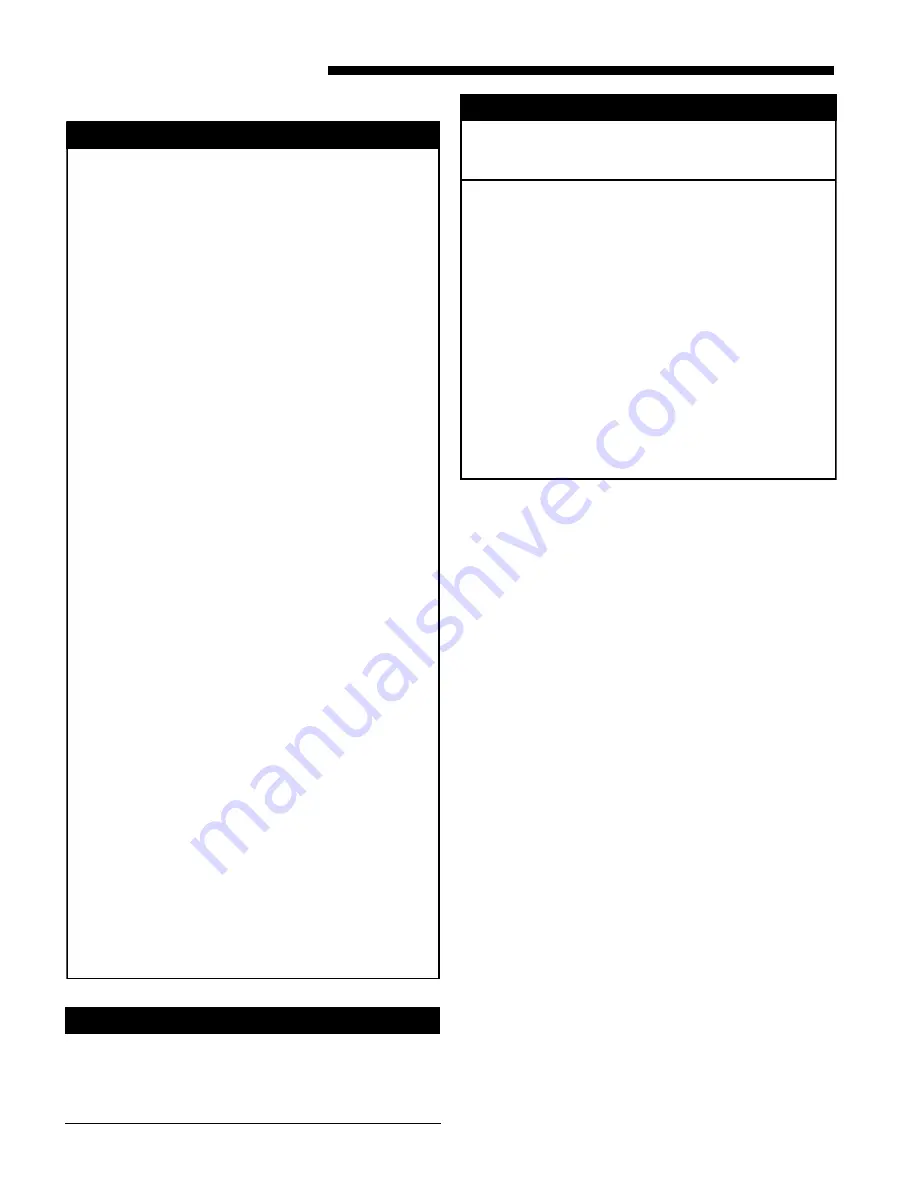
© 2008 Trane All Rights Reserved
18-CD24D1-2
Installer’s Guide
SAFETY SECTION
▲
WARNING
!
FIRE OR EXPLOSION HAZARD
Failure to follow the safety warnings exactly could re-
sult in serious injury, death or property damage.
Improper servicing could result in dangerous opera-
tion, serious injury, death, or property damage.
CARBON MONOXIDE POISONING HAZARD
Failure to follow the steps outlined below for each
appliance connected to the venting system being
placed into operation could result in carbon
monoxide poisoning or death.
The following steps shall be followed for each appliance
connected to the venting system being placed into
operation, while all other appliances connected to the
venting system are not in operation:
1. Seal any unused openings in the venting system.
2. Inspect the venting system for proper size and
horizontal pitch, as required in the National Fuel
Gas Code, ANSI Z223.1/NFPA 54 or the CSA
B149.1
Natural Gas and Propane Installation Code
and these instructions. Determine that there is no
blockage or restriction, leakage, corrosion and other
deficiencies which could cause an unsafe condition.
3. As far as practical, close all building doors and
windows and all doors between the space in which
the appliance(s) connected to the venting system
are located and other deficiencies which could
cause an unsafe condition.
4. Close fireplace dampers.
5. Turn on clothes dryers and any appliance not
connected to the venting system. Turn on any
exhaust fans, such as range hoods and bathroom
exhausts, so they are operating at maximum speed.
Do not operate a summer exhaust fan.
6. Follow the lighting instructions. Place the appliance
being inspected into operation. Adjust the
thermostat so appliance is operating continuously.
7. Test for spillage from draft hood equipped appliances
at the draft hood relief opening after 5 minutes of
main burner operation. Use the flame of a match or
candle.
8. If improper venting is observed during any of the
above tests, the venting system must be corrected
in accordance with the National Fuel Gas Code,
ANSI Z221.1/NFPA 54 and/or CSA B149.1
Natural
Gas and Propane Installation Code
.
9. After it has been determined that each appliance
connected to the venting system properly vents
where
tested as outlined above, return doors,
windows, exhaust fans, fireplace dampers and any
other gas
-fired burning appliance to their previous
conditions of use.
▲
WARNING
!
The following safety practices and precautions must be
followed during the installation, servicing, and opera-
tion of this Furnace.
1. Use only with the type of gas approved for this Fur-
nace. Refer to the Furnace rating plate.
2. Install this Furnace only in a location and position
as specified in “Location and Clearances” (page 4) of
these instructions.
3. Provide adequate combustion and ventilation air to
the Furnace space as specified in “Air for Combus-
tion and Ventilation” (page 9), of these instructions.
4. Combustion products must be discharged outdoors.
Connect this Furnace to an approved vent system
only, as specified in the “Venting” section (page 12),
of these instructions.
5. Never test for gas leaks with an open flame. Use a
commercially available soap solution made specifi-
cally for the detection of leaks to check all connec-
tions, as specified in the “Gas Piping” section of
these instructions on page 19.
6. Always install the Furnace to operate within the
Furnace’s intended temperature-rise range with a
duct system which has an external static pressure
within the allowable range, as specified on the unit
rating plate. Airflow with temperature rise for cfm
versus static is shown in the Service Facts accom-
panying this Furnace.
7. When a Furnace is installed so that supply ducts
carry air circulated by the Furnace to areas outside
the space containing the Furnace, the return air
shall also be handled by a duct(s) sealed to the Fur-
nace casing and terminating outside the space con-
taining the Furnace.
Failure to follow safety warnings exactly, could
result in a fire or explosion causing property
damage, personal injury or loss of life.
— Do not store or use gasoline or other flammable
vapors and liquids in the vicinity of this or any
other appliance.
— WHAT TO DO IF YOU SMELL GAS
• Do not try to light any appliance.
• Do not touch any electrical switch;
do not use any phone in your building.
• Immediately call your gas supplier from a
neighbor’s phone. Follow the gas supplier’s
instructions.
• If you cannot reach your gas supplier,
call the fire department.
— Installation and service must be performed by
a qualified installer, service agency or the gas
supplier.
▲
WARNING
!
































